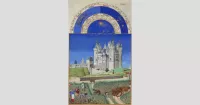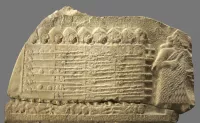The Cvetković–Maček Agreement, reached on August 26, 1939, between Yugoslav Prime Minister Dragiša Cvetković and Vladko Maček, aimed to resolve internal divisions within the Kingdom of Yugoslavia. Its central feature was the creation of the Banovina of Croatia, an autonomous sub-state within Yugoslavia designed to encompass as many ethnic Croats as possible. This fulfilled a long-standing demand of Croat politicians dating back to the Kingdom's formation in 1918. The agreement is significant as it served as a template for the post-war constitutional framework of Federal Yugoslavia.
June 1921: Vidovdan Constitution Established 33 Administrative Districts
In June 1921, the Vidovdan Constitution established 33 administrative districts in the Kingdom of Serbs, Croats, and Slovenes, designed to maximize the political power and representation of the ethnic Serb population.
1922: Issue of Appeasement Towards Croatians Emerges
Starting in 1922, the Serbian elite began debating appeasement strategies for the Croatian population, which became a key aspect of the 'Croatian Question'. Discussions included territorial annexation to Serbia, while Croatian nationalists, led by Stjepan Radić, advocated for separation or a confederate model.
July 1923: Radić Flees Abroad After Insulting Speech
In July 1923, Stjepan Radić fled abroad after an arrest warrant was issued due to a speech insulting to Queen Maria.
1924: Radić Enlisted Party in the Krestintern
In 1924, Radić enlisted his party, the HRSS, in the Krestintern in the Soviet Union, despite King Alexander's support for the Russian Whites against the Bolsheviks. This action deeply offended the Serbian political establishment.
July 1925: Alliance between Radić's HSS and Pašić's Radical Party
On 18 July 1925, a brief alliance was formed between Radić's HSS and Pašić's Radical Party, which led nowhere due to mutual and public contempt.
April 1926: HSS Broke Ranks with the Radicals
In early April 1926, the HSS broke ranks with the Radicals, ending a brief alliance due to ongoing mutual contempt.
August 1928: Maček became the leader of the Croatian Peasant Party
On 13 August 1928, Vladko Maček became the leader of the Croatian Peasant Party (HSS) following Radić's death. He shifted the party's focus away from rural peasant agrarianism towards bourgeois political circles.
1928: Stjepan Radić was shot
In 1928, Stjepan Radić was shot in parliament by Serb deputy Puniša Račić, dying two months later. Radić became a martyr for the anti-Vidovdan cause, shattering remaining Croat faith in the constitution.
1931: Rejection of 1931 Constitution
In 1931, even liberal Serbian circles, where the 1931 Constitution was unpopular, rejected the Cvetković–Maček Agreement. The outrage was due to Croatians legitimizing the authoritarian system and the 1931 Constitution through their cooperation with the government.
1931: 1931 Yugoslav Constitution (September Constitution)
In 1931, the Vidovdan Constitution was replaced with the 1931 Yugoslav Constitution, also known as September Constitution, and the country officially became the Kingdom of Yugoslavia. The 33 administrative districts of the Vidovdan Constitution were replaced with nine banovinas.
1931: September Constitution Established
The September Constitution of 1931 was established, leading to the formation of the 'United Opposition' which aimed to challenge the biased political system.
July 1932: Maček declined leading the Yugoslav government
In July 1932, Maček was offered the possibility of leading the Yugoslav government as prime minister, but he declined the offer.
December 1938: United Opposition Secured 45% of the vote
In December 1938, the United Opposition, including the HSS, secured 45% of the vote, further undermining the authority of Prime Minister Stojadinović.
February 1939: Cvetković Replaced Stojadinović
In February 1939, Stojadinović was replaced with Cvetković as Prime Minister, in part due to the success of the United Opposition in the December 1938 elections.
February 1939: Stojadinović's Government Fell
In early February 1939, Milan Stojadinović's government fell due to loss of cabinet faith. Dragiša Cvetković replaced him as prime minister on February 5.
August 1939: Politics
On 27 August 1939, the Politics was written about Sporazum Cvetković—Maček.
August 1939: Negotiations Produce the Sporazum
Throughout August 1939, negotiations between Cvetković and Maček produced the Sporazum, which was finalized on August 20 and ratified on August 26. This agreement aimed to increase Croatian autonomy.
August 26, 1939: Cvetković–Maček Agreement settled
On August 26, 1939, the Cvetković–Maček Agreement was settled by Yugoslav prime minister Dragiša Cvetković and Croat politician Vladko Maček. This agreement established the Banovina of Croatia within Yugoslavia, aiming to include as many ethnic Croats as possible and creating an autonomous Croatian sub-state.
1940: Serbian Cultural Club Proposal
In mid-1940, the Serbian Cultural Club, led by Slobodan Jovanović, proposed a plan to include Bosnia, Montenegro, and Macedonia into a banovina of Serb countries. This proposal reached the planning stages, but was never realized due to increasing pressure from the Second World War.
March 1941: Yugoslav Coup d'état
In March 1941, the Yugoslav coup d'état took place, immediately preceding the German Invasion of Yugoslavia. At this time, Dragiša Cvetković was the prime minister.
April 1941: German Invasion
In April 1941, the German Invasion of Yugoslavia prevented the political realization of the Cvetković–Maček Agreement, as the terms of the treaty remained largely unfulfilled due to the outbreak of the Second World War.
Mentioned in this timeline
The Union of Soviet Socialist Republics USSR existed from to...
Serbia is a landlocked country in Southeast and Central Europe...

Annexation in international law is the forceful seizure and claim...

A constitution is a set of fundamental principles and precedents...

September is the ninth month of the year in the...

War is an armed conflict between state armed forces or...
Trending

55 minutes ago Demi Moore's Missed Opportunity: The Sandra Bullock Role She Turned Down

56 minutes ago Roki Sasaki's Dodgers Debut: Analyzing His First Four Starts and Future Goals.

56 minutes ago Draymond Green shades Towns, Beasley takes a shot, Towns receives support.

56 minutes ago MLB expert predictions focused on Kodai Senga, Trout, Albies, and RBI props.

56 minutes ago Tyler Childers Concert at Kroger Field: Flood Relief and Concert Reminders

2 hours ago Justin Thomas Incurred One-Stroke Penalty at RBC Heritage, Calls Penalty on Himself
Popular
The Real ID Act of is a US federal law...

Bernard Bernie Sanders is a prominent American politician currently serving...

Marco Rubio is an American politician who served as a...

Cristiano Ronaldo nicknamed CR is a Portuguese professional footballer widely...

Michael Jordan also known as MJ is a celebrated American...

Donald John Trump is an American politician media personality and...